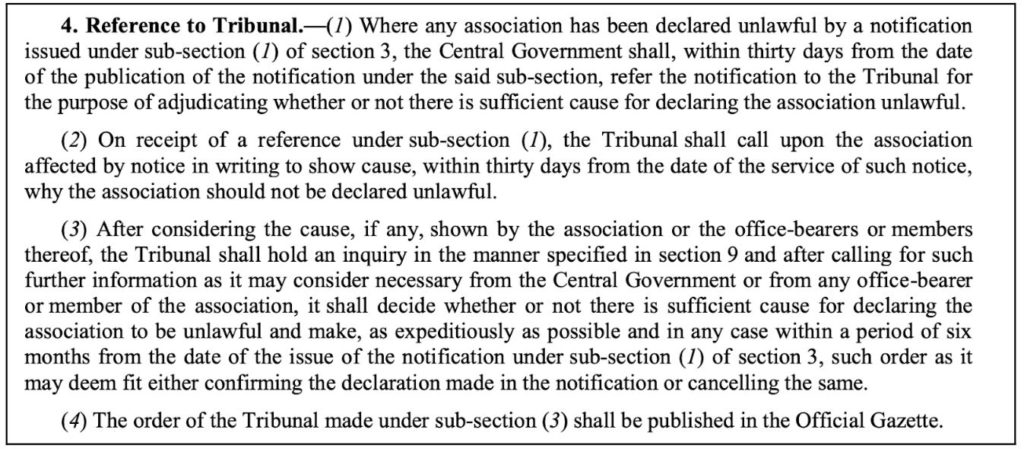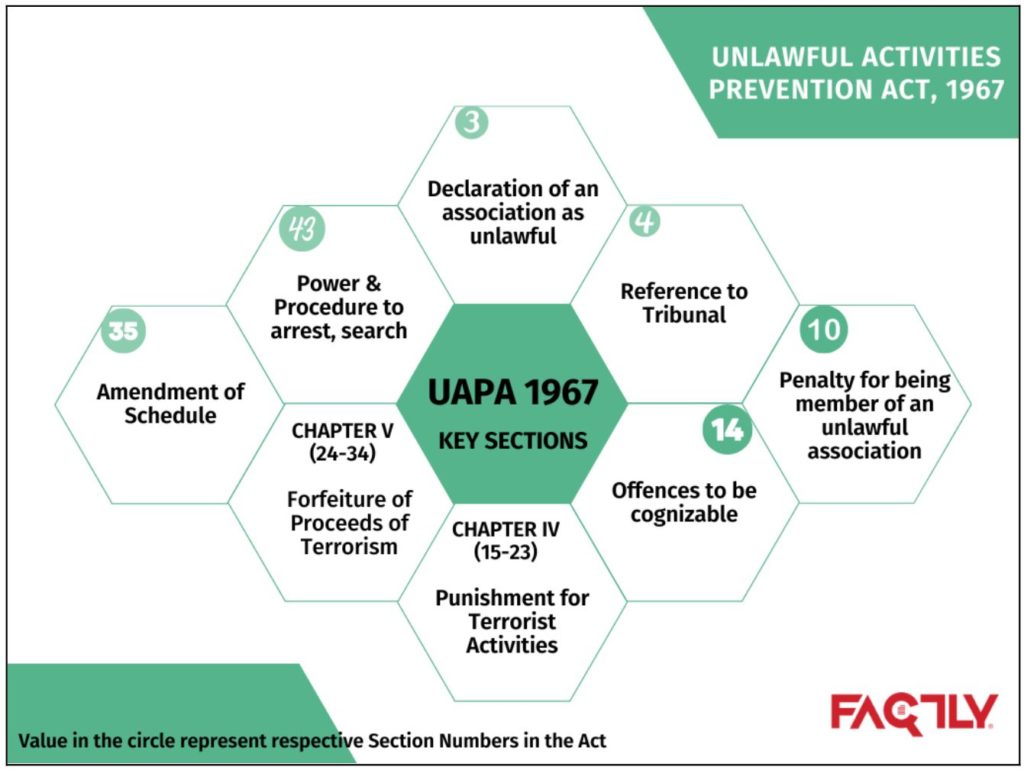The recent ban on Popular Front of India (PFI) has once again put spotlight on the Unlawful Activities Prevention Act (UAPA), 1967. The UAPA has provisions for declaring associations as ‘unlawful’ and prescribes measures for activities linked with such ‘unlawful association’. Here is a review.
Terrorism has significant human, economic and social consequences. Though there is no universally agreeable definition for terrorism, a definitive feature of any act of terrorism involves using force or coercion to create violence thereby spreading fear, which in turn is utilized to attain ideological or political goals. Terrorism leads to loss of individual human rights, in addition to the threats to social and economic development. Terrorism often targets innocent individuals, thereby putting pressure on the governments. Accordingly, governments come up with counter-terrorism strategies that aim to prevent acts of terrorism and prosecute those involved in such activities. One such law enacted in India is the ‘Unlawful Activities Prevention Act’ (UAPA), 1967.
The recent ban on Popular Front of India (PFI) has once again put spotlight on the Unlawful Activities Prevention Act (UAPA), 1967. In today’s story, we look at the UAPA, and its provisions.
Anti-terror laws in India
Originally conceived to combat ‘unlawful activities’, the UAPA, 1967 was the first step in the journey of the counter-terrorism laws in India. The first anti-terror law began as the Terrorist Affected areas act (TAAA), which was remodelled as the Terrorist and Disruptive Activities (Prevention) Act, (TADA) 1987. After it’s lapse in 1997, it was repealed due to widespread criticism on its draconian provisions. It paved the way for Prevention of Terrorism Act (POTA), 2002. It was repealed in 2004, but its provisions were included in the Unlawful Activities Prevention Act, (UAPA) 1967.
Currently, UAPA remains as the primary anti-terror law for Indian agencies. It was amended in 2004, 2008, 2013, and 2019. These amendments were aimed at giving powers to the state and the agencies dealing with counterterrorism.
Key provisions of UAPA
UAPA 1967, has provisions for declaring associations as ‘unlawful’ and prescribes measures for activities linked with such ‘unlawful association.’ The Section 3 of the act provides for declaring associations as ‘unlawful’.

While the order of the Tribunal constituted under this act confirming the declaration of any such association as ‘unlawful’ is necessary to make such declaration effective, the Central Government has powers to declare any organization ‘unlawful’ with immediate effect, if such circumstances exist and the reasons are stated in writing. The latest notification on the ban of PFI is issued using this exception.

In normal course, the Union Government shall refer such notification to the Tribunal within thirty days of any such issuance of notification and publication. The tribunal issues show-cause notice to the association with a deadline of thirty days. Upon receiving, the tribunal shall conduct inquiry and decide on the validity of such declaration within a period of six months from the date of issuance of notification.

This tribunal is appointed by the Central Government and consists of only one person. The appointed person shall be a former judge of a High Court, as mentioned in the Section 5 of the act. Any support in terms of expenses and staff are borne by the Central Government itself.
The Central Government has powers to prohibit the use of funds of an unlawful association under Section 7, and the power to notify places used for the purpose of an unlawful association under section 8 of this act. The Section 10 of this act prescribes penalty for being member of such unlawful association. All offences under this act shall be deemed to be cognizable offences under section 14 of the act.
The act also has provisions for punishment for terrorist activities under Chapter IV. This includes punishments for committing terrorist act, raising funds for such acts, membership of such organization, recruiting and harbouring people for terrorist acts. This chapter also includes offences by companies, societies or trusts, and punishments for them.
The Chapter VI of this act deals with terrorist associations and individuals. Under Section 35 of this act, the Central Government can add or remove an organization to the First Schedule of the act, or individual under Fourth Schedule of the Act, to designate as terrorist associations or terrorists. Any such order shall be laid before the house of the Parliament. These can be de-notified under section 36 of the act.

Statistics on UAPA
As on 16 March 2022, thirteen (13) associations have been declared as ‘unlawful associations’ under section 3 of the UAPA 1967, and around 40 organizations have been added to the First Schedule of the act, deeming them to be terrorist organizations. The recent PFI ban is under the Section 3 of the act. So far, 38 individuals have been designated as terrorists under UAPA.
Factly’s data story on UAPA reveals the growing average number of cases registered under UAPA since 2014, with huge pendency and low disposal rates. The conviction rate has also been significantly lower for UAPA.
What lies ahead if banned under UAPA?
The designation of an organisation as an unlawful organisation, as it has been in the case of the PFI currently, has severe legal repercussions, including the criminalization of its members and the confiscation of the organization’s assets under various provisions of the UAPA.
After the declaration of the Organization or association as ‘unlawful’, such notification must be provided to the adjudicating tribunal within 30 days under Section 4 of the act. This must be complemented with the details of all the cases registered against such association by different agencies like the NIA/ED/police forces etc. Upon considering the same, the tribunal issues show-cause notice for the organization to explain why it should not be banned or deemed ‘unlawful’ within 30 days. The tribunal, based on the reply received, conducts inquiry. It has the powers of civil court such as the power to call upon witnesses, requesting any public record from a court or government agency, producing any document or other item that can be used as evidence among other things. Based on such information, the tribunal shall accept or reject the declaration issued by the Central Government. Incidentally, in majority cases, the tribunal had confirmed the notifications issued by the Government.
The tribunal’s proceedings have come under spotlight in recent times for being vague and opaque, and for indirectly supporting the use of ‘sealed cover’ by the government, leaving the affected with little or no information required to defend themselves.
Featured Image: Unlawful Activities Prevention Act(UAPA)


